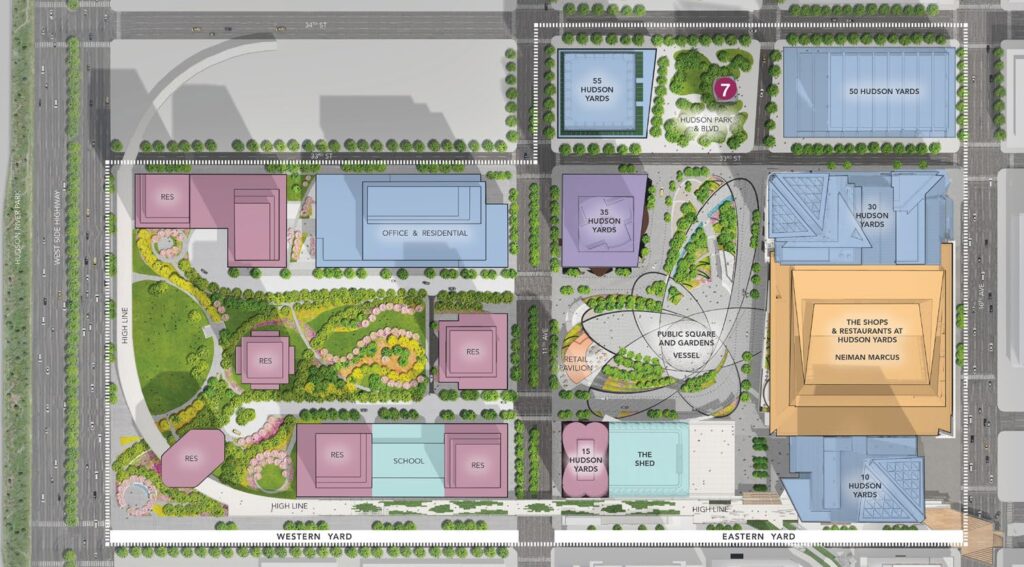The Economic Benefits of Mixed-Use Development
Mixed-use development is gaining popularity more than it used to because people’s needs and preferences are changing as we progress as human beings. This is why urban designers and city leaders have to keep up in order to create places and buildings that respond to the continuously changing needs of the citizens. Mixed-use developments, which combine residential, commercial, recreational, and cultural buildings in one single building or an entire neighborhood, are quickly becoming go-to projects, as they offer a wide variety of advantages, including economic, social, real estate, and environmental advantages, for the citizens on the one hand, and cities on the other.

Here are 5 economic benefits of mixed-use developments:
1- Enhanced business investments:
Because mixed-use developments have commercial, cultural, and recreational buildings in close proximity to residential buildings, they contribute to the economic growth of the city by attracting more business investments. In fact, people tend to invest more in mixed-use development projects because foot traffic in this type of developments is usually high, which means that businesses tend to experience a lot more foot traffic and become more successful and profitable than in single-use development projects. Business investments in mixed-use developments lead to versatile spaces and diversified options, which also adds to the convenience of the space, as they provide new opportunities and chances for innovation, whether in retail, leisure, entertainment, or services facilities.
2- Low transport costs and reduced traffic:
One of the economic advantages of mixed-use developments is the decrease in transport costs due to the proximity of residential buildings to other commercial and cultural buildings. Mixed-use developments offer citizens the chance to use their cars less often by promoting walking and cycling more. In fact, successful mixed-use developments that offer different activities within a convenient and comfortable space create a people-centered urban design that shifts the focus away from cars and towards people, which promotes foot traffic and reduces the need for vehicle travel and parking spaces. This allows urban designers to focus more on creating pedestrian-friendly and walkable streets that lower transport costs and thus enhance quality of life.
3- Shared public spaces:
In addition to their social benefits, public spaces, such as parks and plazas have great economic value. To create successful mixed-use development projects, urban designers often look to build high-quality public spaces, as well-designed parks, plazas, and other public spaces tend to attract more businesses and investments. On the other hand, not only do well designed public landscapes attract investments and increase business developments, they also attract house buyers and tourists. In fact, public spaces can have a great impact on property and housing prices, as today, people tend to look for housing near public and green spaces, and have no problem paying more to live near them and use them for more recreational activities.
4- Housing for all:
In addition to commercial, recreational, and cultural buildings, well-planned mixed-use development projects have mixed-income housing development. This means that people with different income ranges can live in the same community, which fosters a healthier and happier population. In fact, providing affordable housing for everyone helps people shift their priorities towards achieving more economic stability and creates a sense of belonging. This allows citizens with lower income to spend more money on entertainment and leisure activities, while also having equal access to all other public spaces and amenities, helping establish better mental well-being. On the other hand, providing housing for all also increases desirability, as having luxury and affordable homes in the same place attracts more people, which also promotes economic growth.
5- Vibrant and sustainable neighborhoods:
One of the most important advantages of mixed-use developments is their ability to create vibrant and sustainable neighborhoods that are full of life, even after a tiresome workday. Mixed-use developments provide comfortable pedestrian access to entertainment facilities, restaurants, and parks, which encourages people to go out any time during the day or night, leading to economic growth and better productivity. In addition, mixed-use developments that are people-centered and have good placemaking attract more tourists and residents and create connected, resilient, and healthy communities that privilege the individual experience and promote sustainable relationships. On the other hand, well-planned mixed-use developments comprise elements that complement each other well. They also promote equal and sustainable access for all, and do not exclude anyone based on gender, race, age, social, or financial group, which also increases vitality and vibrancy and creates economically successful neighborhoods.
Urban designers are becoming more and more aware that they need to adopt new approaches in urban design to respond to the changing needs of the population. Today, people prioritize convenience and well-being above all. This is why mixed-use developments are gaining more popularity among urban designers, as they are places that have it all, from public parks, restaurants, entertainment activities, and pedestrian-friendly streets to housing opportunities, retail, and sustainability. And with many mixed-use developments combining between retail and residential, shopping locally is becoming easier and a lot more fun.
Follow Noëlla Aoun Design Studio or visit our website for more Urban Design, Architecture, Interior Design, Landscape Design, Environment, Real Estate and Sustainable Development articles.

